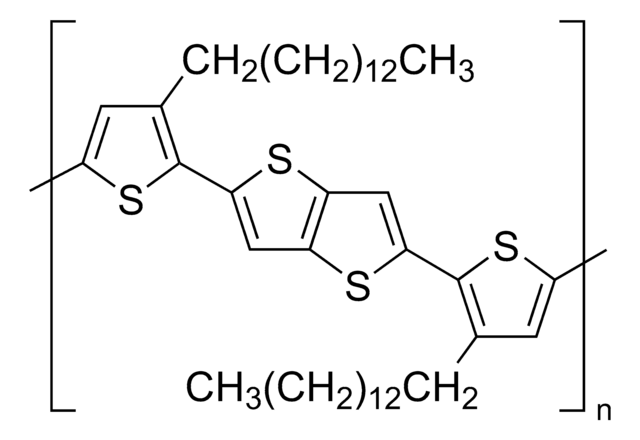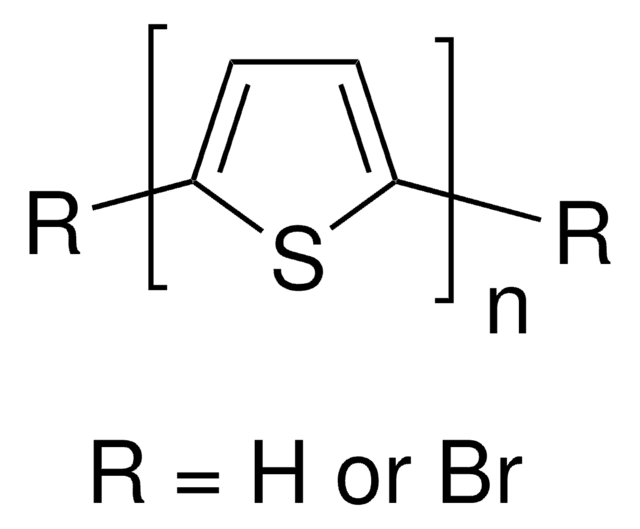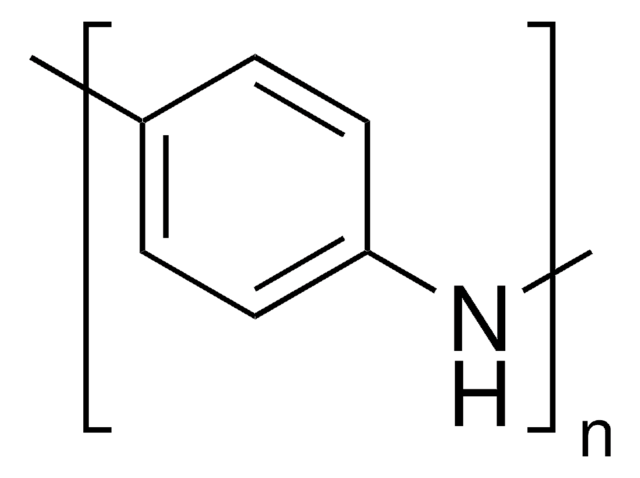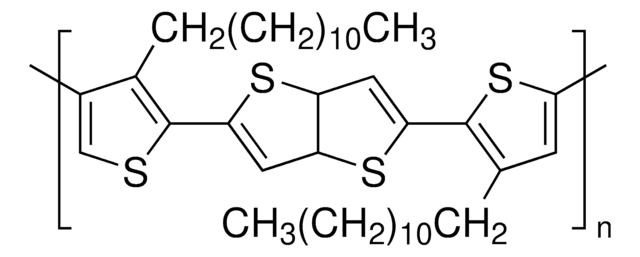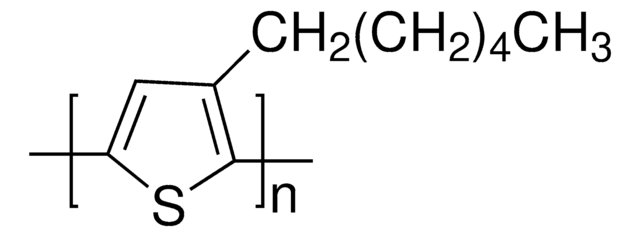906921
PQT-12
Sinônimo(s):
Poly(3,3′′′-didodecyl[2,2′:5′,2′′:5′′,2′′′-quaterthiophene]-5,5′′′-diyl), Poly(4,4′′-didodecyl[2,2′:5′,2′′:5′′,2′′′-quaterthiophene]-5,5′′′-diyl)
About This Item
Produtos recomendados
descrição
Band gap: 2.27 eV
Eox = 0.45 V
Solution processable (chloroform, chlorobenzene, etc)
LIFT transferable
Formulário
solid
peso molecular
Mw 10,000-25,000 by GPC
cor
brown
solubilidade
>5 mg/mL (in CHCl3)
λmax
473 nm in toluene
Energia orbital
HOMO -5.24 eV
LUMO -2.97 eV
temperatura de armazenamento
15-25°C
Categorias relacionadas
Aplicação
Código de classe de armazenamento
11 - Combustible Solids
Classe de risco de água (WGK)
WGK 3
Ponto de fulgor (°F)
Not applicable
Ponto de fulgor (°C)
Not applicable
Escolha uma das versões mais recentes:
Certificados de análise (COA)
Não está vendo a versão correta?
Se precisar de uma versão específica, você pode procurar um certificado específico pelo número do lote ou da remessa.
Já possui este produto?
Encontre a documentação dos produtos que você adquiriu recentemente na biblioteca de documentos.
Artigos
Dr. Chan and researchers highlight flexible transistors are the building blocks of next-generation soft electronics. Among all the reported material systems that can be fabricated by researchers, such as circuits, biosensors, stretchable displays, and others,1–5 small molecular weight organic semiconductors are among the most promising candidates for flexible transistor applications. For these small molecular weight organic semiconductors, the semiconductor forming the conductive channel dominates the device performance.
Professor Tokito and Professor Takeda share their new materials, device architecture design principles, and performance optimization protocols for printed and solution-processed, low-cost, highly flexible, organic electronic devices.
Professor Chen (Nankai University, China) and his team explain the strategies behind their recent record-breaking organic solar cells, reaching a power conversion efficiency of 17.3%.
Nossa equipe de cientistas tem experiência em todas as áreas de pesquisa, incluindo Life Sciences, ciência de materiais, síntese química, cromatografia, química analítica e muitas outras.
Entre em contato com a assistência técnica